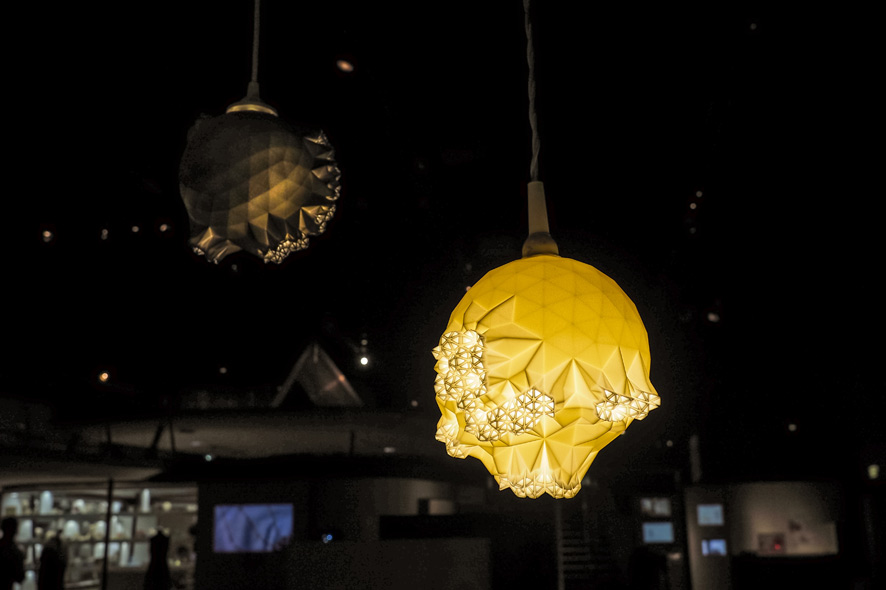Here’s the sofa, the workspace is over there, and this is where the dining room table will be. So we want muted lighting over there, focused illumination in this area, and a gently brightened surface here. In the middle of the room hangs a Highlight, a ceiling lamp that’s the output of a 3-D printer and designed to perfectly comply with users’ wishes. Projects such as Beyond Prototyping address issues having to do with personalized design. One brilliant example of this is Highlight, Jussi Ängeslevä’s prototype that’s now on display in the Alchemists of Art and Science exhibition at the Ars Electronica Center.
What was the aim of your research “Rethinking prototyping” project and what did you learn?
Jussi Ängeslevä: Rethinking prototyping, or more concretely, “Beyond prototyping”, as my part of the research project was called, was to look at the potential of digital fabrication in making personalised objects, defined by algorithm. All in all, what we learned that it is not easy to find meaningful customisation parameters beyond the obvious things like “fit”. Fundamentally, we were trying to find some general way of thinking what makes sense to leave for the designers, and what could be defined by the user.
On your website you are talking about “a vision of service model that sits between atelier and mass production” – could you please outline this a little bit more?
Jussi Ängeslevä: Well, atelier service is highly customised, perfectly personalised, and is very much about the “narrative”. For example, the designer listens to you, and responds to your aspirations and requirements. Mass production, on the other hand, has a general purpose solution, (or rather, many solutions), and you as a user/customer, choose one. But implicitly, it’s not designed for you, but for a particular stereotype. And the closer you match that stereotype, the closer it fits. And of course, Atelier service is expensive, and mass product is cheap.

Credit: Martin Hieslmair
“Highlight” was one case study of this project. What are the special features of this 3d printed lamp?
Jussi Ängeslevä: Well, one could see it as a lamp, or as a product-service-system. The idea was to have something of an atelier service, in a sense that the user can scan/analyse his/her space, and then decide the “functional aspect” of the lighting. For example, where should the light go? And then the “designer” in this case, an algorithm running on a server, does the designing, and creates a striking form that fulfils the required light distribution. But for the rest of it, it’s a lampshade, a kind of “hello world” of 3D printed products ;)
What are your current (design) projects you are working on?
Jussi Ängeslevä: Well, many different things. Exhibitions, artworks, interaction design research… but perhaps this could be interesting: something we just recently installed at a new museum in EPFL in Lausanne: Outrelumière. There we created computationally designed lenses that project an image in space when illuminated with point light. This definitely also has potential for the more product like direction what the Beyond Prototyping was looking at.
Do you have any tips for budding designers?
Jussi Ängeslevä: Talk about your ideas to others. And listen to what they say. And then reflect.
Highlight, Ciphering and Locatable, three prototypes by Jussi Ängeslevä, are currently on display in the Alchemists of Art and Science exhibition at the Ars Electronica Center. Complete information about the show is online at ars.electronica.art/center.

Professor Jussi Ängeslevä teaches at the University of the Arts Berlin and the Royal College of Arts alongside leading the creative efforts at ART+COM studios as a Vice-Creative Director. Throughout his career his focus has always been intentionally in between fields: combining understanding of visual, physical and interaction design with algorithmic, electronic and mechatronic knowledge to create innovative and elegant experiences.
